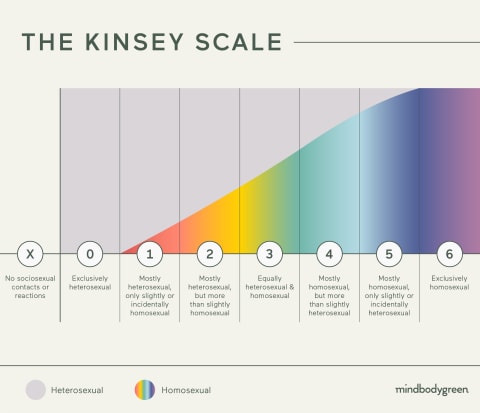At the time, Kinsey’s research found that most people fell somewhere between the two, Hodder-Shipp notes. This, and much of Kinsey’s research, was considered subversive and groundbreaking for its time. That said, today the scale is considered to have some limitations, both in terms of its ability to accurately represent the vast array of experiences of sexuality and because it excludes nonbinary folks. Not everyone will feel like they fit into one of these seven categories, and that’s OK. Here’s what each label represents: Kinsey, who was an entomologist, was hired at Indiana University to teach sex education, but there wasn’t much to draw from. So, with the help of a team of grad students, he began doing his own research, much of which ultimately changed the world of sexual education and understanding. The Kinsey Scale was developed in an attempt to show how sexual orientation (specifically, heterosexuality and homosexuality) existed on a continuum, or spectrum. A common misconception today, Queen adds, is that “Kinsey was trying to codify a binary way of looking at sex. This is ahistorical, though.” “People did think in binary, either/or terms in those days to a significant degree,” she notes but adds, “Among other things, the Kinsey scale illustrates how significant bisexuality is since everything in the middle of the scale could be called bisexual.” “It really helped make bisexuality visible, as well as helping bring homosexuality out of the closet. In my day (the ’70s, when I came out), the gay movement very openly acknowledged its debt to Kinsey,” Queen says. The scale wasn’t intentionally meant to exclude these groups of people, Queen notes; it is in many ways an artifact of its time, and language to describe gender diversity was simply in its infancy at the time the scale was developed. According to Queen, Kinsey didn’t think it was appropriate to use orientation terms as anything but adjectives—he did not want us to use these words to define ourselves, but so far he has lost that battle with history, she says. “Still, when we think about why he felt so strongly, it might point to the fluidity of identity, or the way people can engage in all sorts of behavior that doesn’t match their ’label,’ and when we look at our history of behaviors and attractions, those are really useful insights.” “Like, what does it mean to be ‘incidentally’ homosexual or heterosexual? Where do I fall on the Kinsey Scale if I’m not really heterosexual but also definitely not homosexual? What if I feel lovey-dovey feelings toward pretty much any gender, but only sometimes feel sexually attracted to one gender?” If you do find yourself identifying with the parameters set on the scale, Menezes suggests “taking what you love and leaving the rest.”




